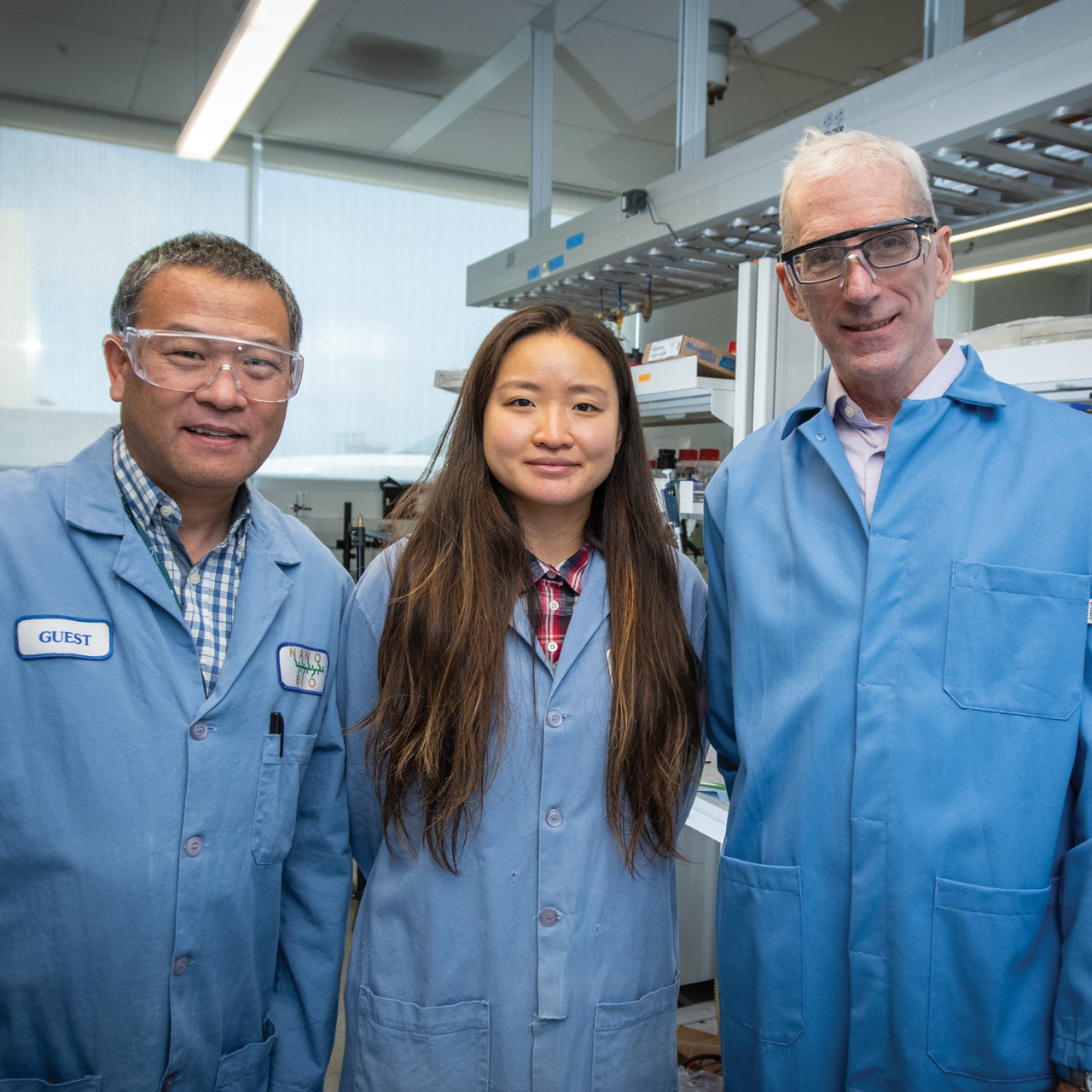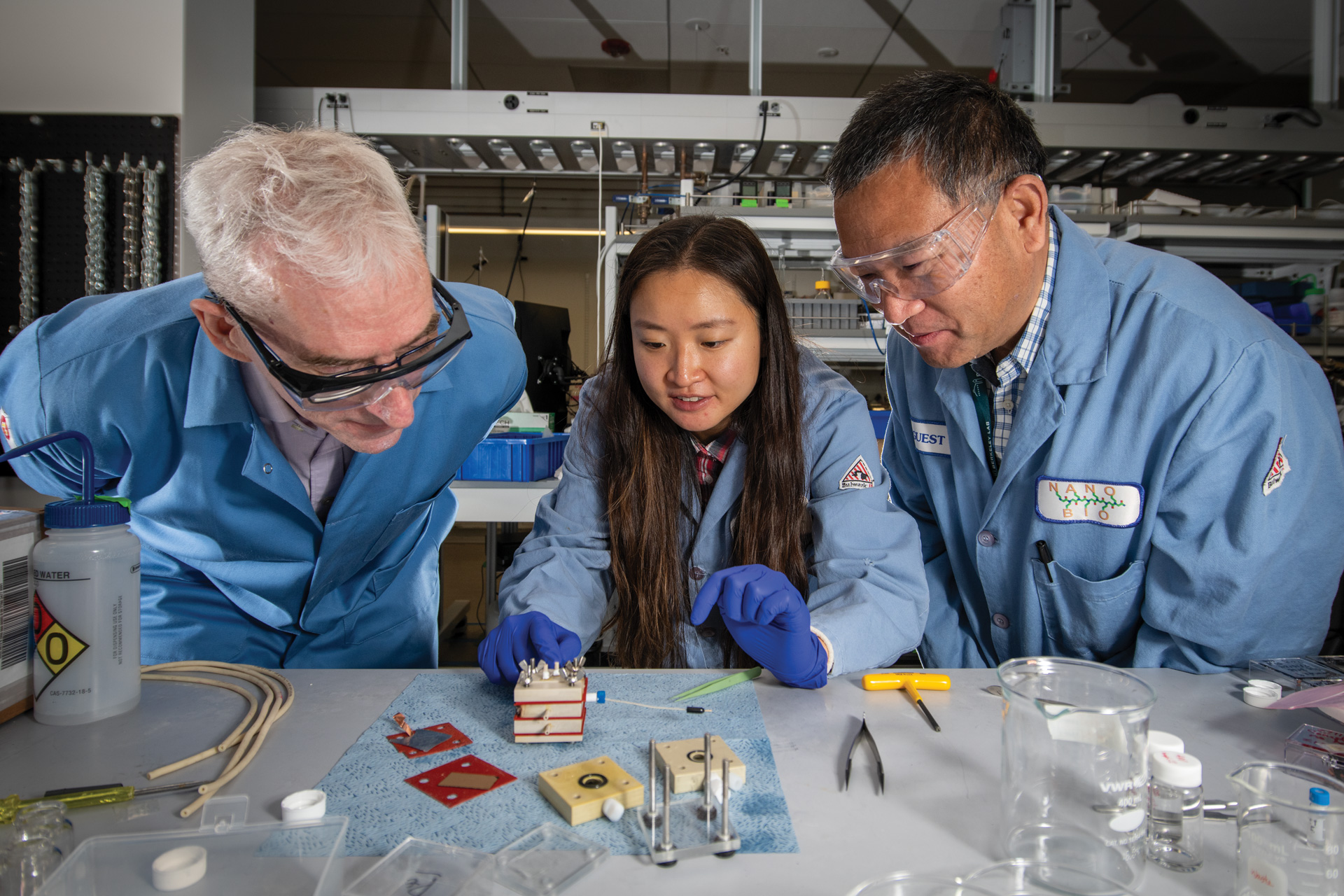Innovations to help us find and create alternative energy sources to propel us into the future are more vital than ever.
It turns out many answers can be gleaned from the biggest source of heat and light we encounter every day — the sun.
One such other-worldly innovation is being pursued by Dr. Joel Ager and his staff at the Lawrence Berkeley National Laboratory (LBNL) in Berkeley, California. Ager was a special ENMU 90th-anniversary Homecoming guest lecturer in October.
The team at LBNL uses electrolysis on various metals like gold, silver, platinum, cobalt, and copper to create novel products. Our own Dr. Juchao Yan, professor of chemistry, is honored to have been part of this research.
"Dr. Ager is a world-renowned scientist, and LBNL has a world-class research facility," Yan stated. "I have been fortunate to work on this project with Dr. Ager and his team."
Out here on the High Plains, where the sun can often be adversarial, our students — especially those who slather on sunscreen or live behind dark sunglasses — have a chance, in a small but scientific way, to "walk on sunshine" and explore some of the beneficial potential of the sun's extraordinary power.
Through a collaboration with LBNL, Dr. Yan is working to develop out-of-this-world opportunities for ENMU students, who now have the chance to work on processes that reverse engineer photosynthesis.
"If we can figure out photosynthesis and make fuels and products, we can change the entire chemical industry," Ager stated. "That's my challenge."
 Examples of products that Dr. Ager's team is working to create are ethylene, an important platform chemical that can be used to make polyethylene, and ethylene oxide, which, in turn, is used to manufacture plastics and industrial liquids.
Examples of products that Dr. Ager's team is working to create are ethylene, an important platform chemical that can be used to make polyethylene, and ethylene oxide, which, in turn, is used to manufacture plastics and industrial liquids.
Currently, these chemicals are created with processes that contribute significantly to carbon dioxide (CO²) and other greenhouse gases, raising the planet's average temperature. One solution — no pun intended — is to recycle the excess CO² into the process to create more products.
The wide use of this process could reduce carbon emissions by 14 megatons per year in the production of ethylene oxide alone.
While Dr. Ager's research experiments are promising, they still exist on a comparatively tiny scale and can only be run for short periods of time. The longest they've been able to conduct their artificial photosynthesis process is 20 days before corrosion and degradation force them to shut down the experiments and rebuild their systems.
"We were feeding our artificial sunlight device pure CO²," Ager said. "Plants just pull it out of the atmosphere with other gases in the air. Also, the products we were creating weren't in a usable form, while nature makes plenty of biomass, we have a ways to go."
The sunlight conversion rate to energy in the natural world is one percent. Dr. Ager's experiments are running at an average of about five percent efficiency. With a long road ahead of them and much more light to be shed on the challenge, Dr. Ager says it's humbling to see how beautiful the natural processes are.
Sometimes, in the elegant and natural processes of the real world, hints exist to answer the most out-of-this-world challenges.
In the meantime, we look forward to seeing Greyhound students trading in their sunglasses and sunscreen for lab coats. They'll be walking on sunshine, and won't it feel good?

